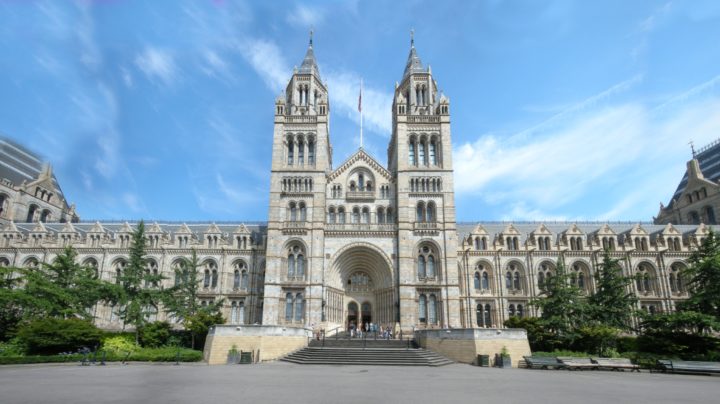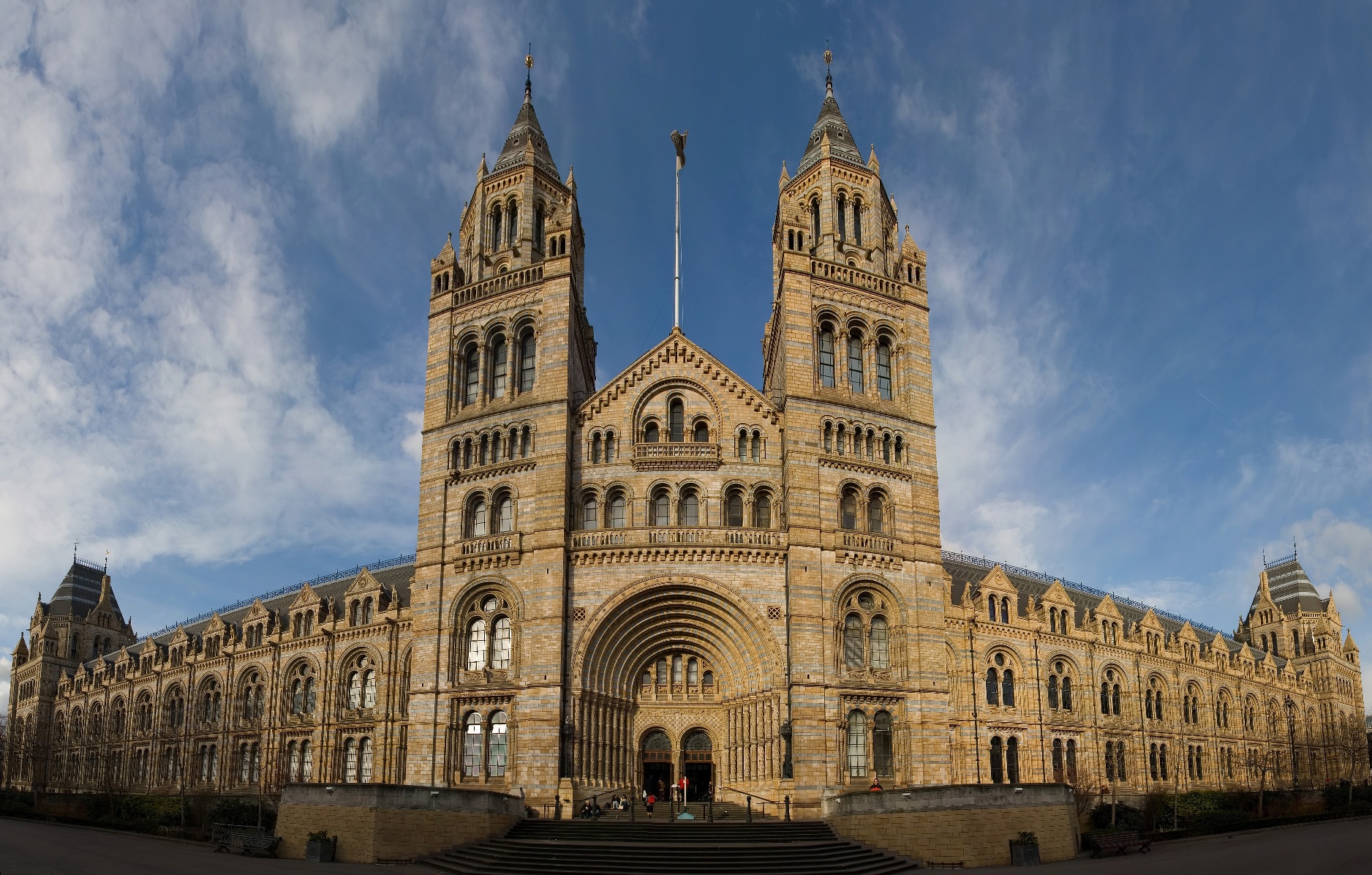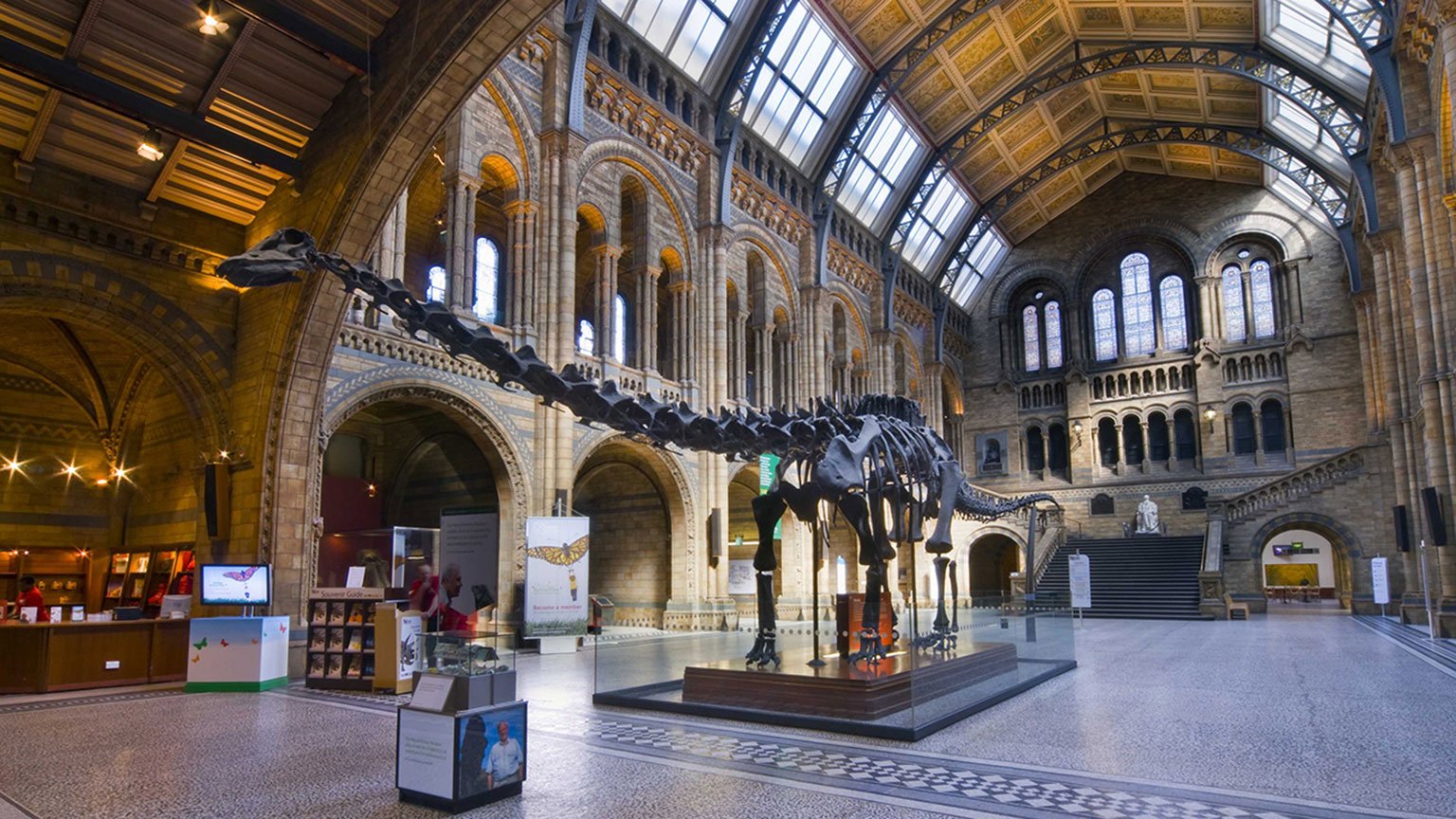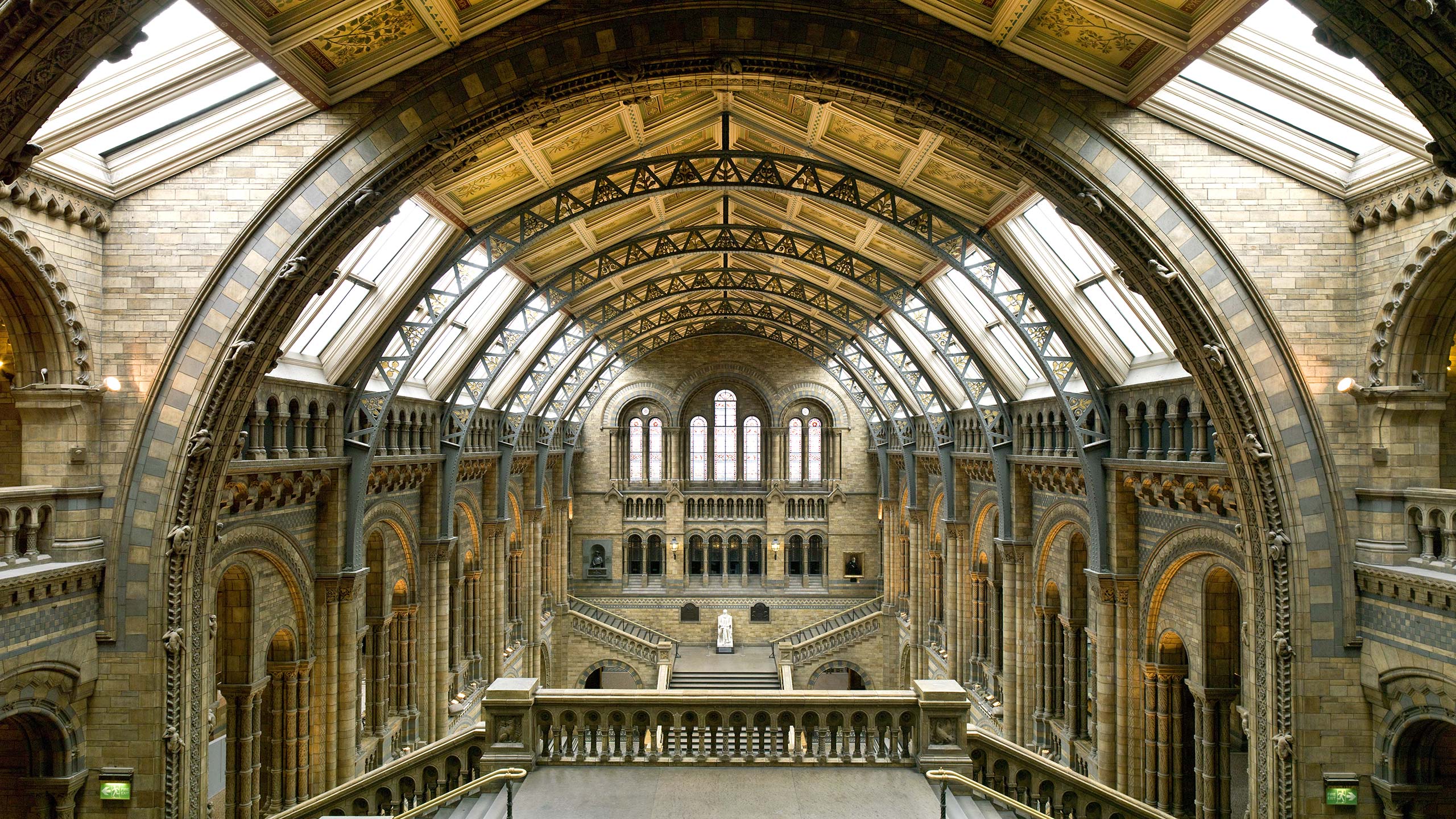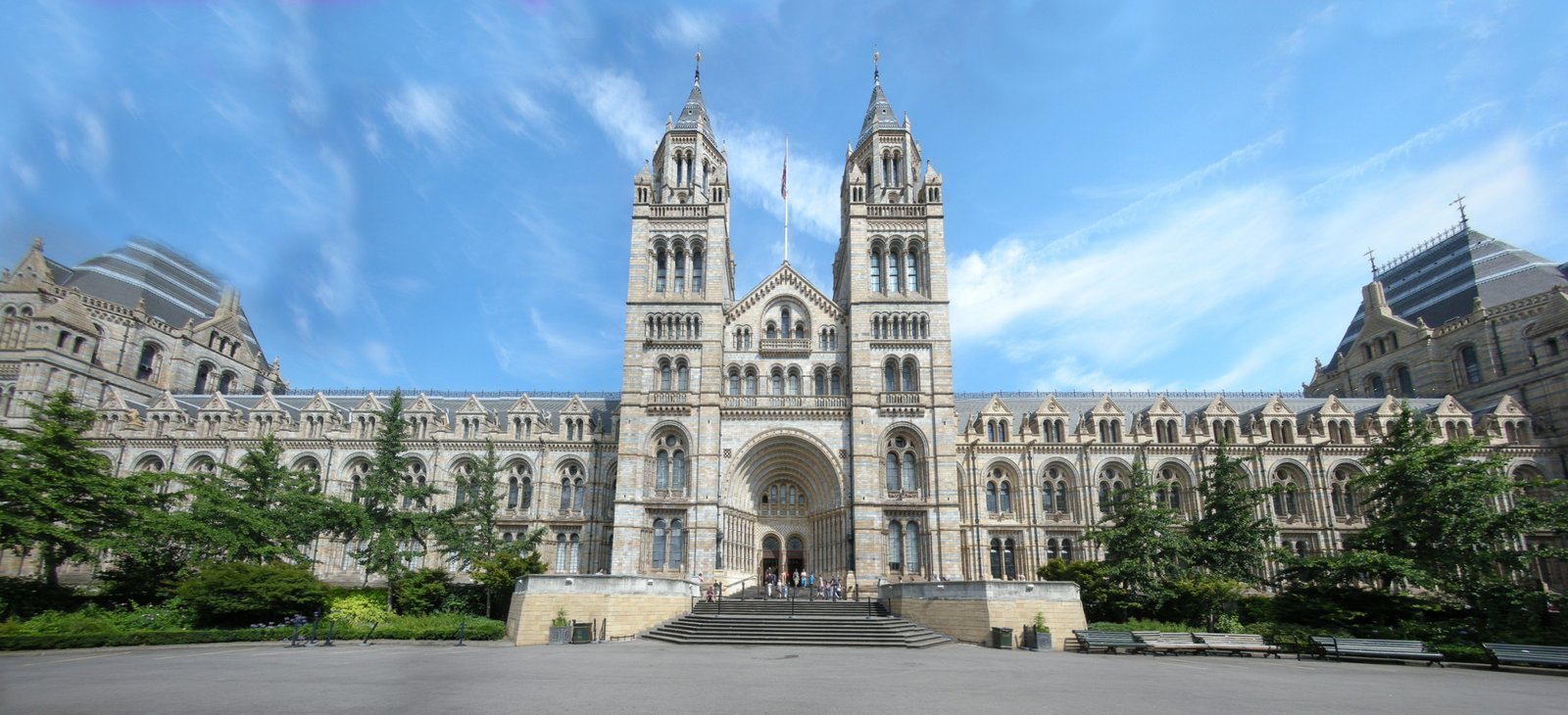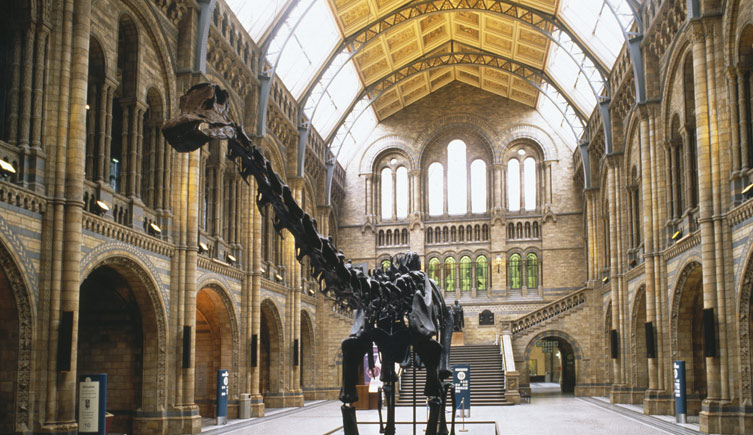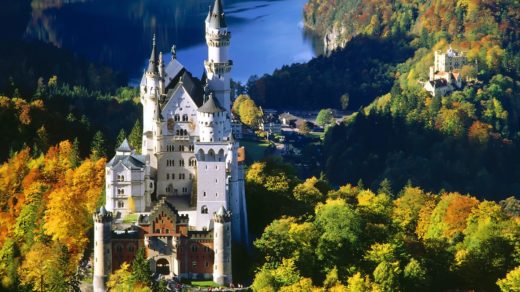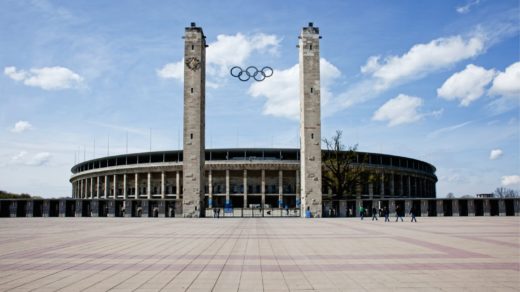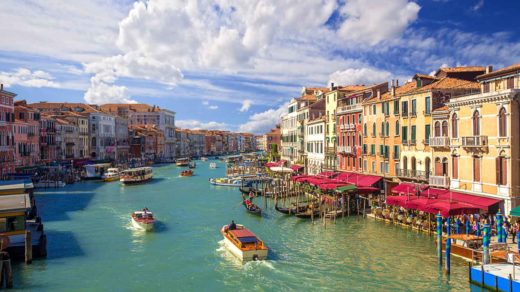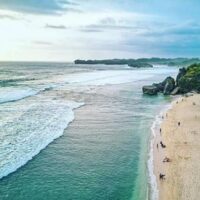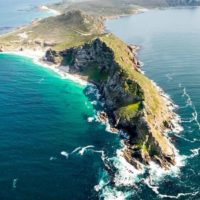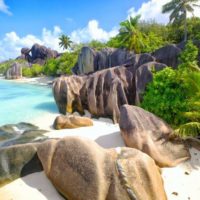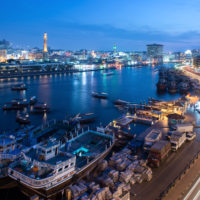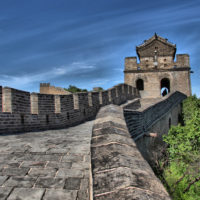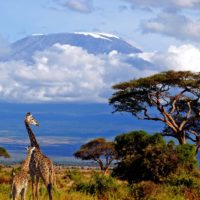Natural History Museum or commonly known as the “Natural History Museum of London” or “British Museum of Natural History” or formerly known as the British Museum (Natural History) is one of the largest museums of London are located on Exhibition Road, South Kensington, London. This museum is a fraction of the British Museum, established specifically to store and display a collection of objects related to the British Museum of natural history.
The museum is famous for its architecture as well as exhibits replicas of dinosaur bones. Before the establishment of the Natural History Museum, the objects in the museum are collections of the British Museum, which is the result of contributions from Sir Hans Sloane in 1756. But in the early 18th century, a large collection of donations from Sloane disappearing. Even in 1833, the annual report states that more than 5,500 insects listed in the catalog is not there anymore. The British Museum is considered not being able to preserve specimens. This is exacerbated by the election staff and officials who are not qualified. Library head at the time, Antonio Panizzi, assume that department at the British Natural History Museum had gone too far and he advised the people not to visit the museum. The chaos at the department of Natural History can it be addressed piecemeal by Richard Owen.
Ministry of Natural History requires a broader space for managing collections. Then came the idea to split the Department of Natural History at the British Museum. In 1864, a plot of land area in the Kensington area purchased to meet the needs of the new museum. The building design used is the work of a civil engineer is Captain Francis Fowke. But not long after, Fowke died, so the construction was taken over by Alfred Waterhouse. Waterhouse then change the architectural design on the front line with his own style.
The construction finally began in 1873 and was completed in 1880. At the time of the new museum was first officially opened, the museum is still part of the British Museum and known as the “British Museum (Natural History)” or commonly abbreviated BMNH. There are many suggestions to separate the museum from the British Museum, including from scientists such as Charles Darwin, Alfred Russel Wallace and Thomas Henry Huxley.
Yet this new museum separation occurred about a century later, referring to the British Museum Act 1963, the museum was finally officially named the Natural History Museum with the launch Museums and Galleries Act 1992. The Natural History Museum has a collection of 70,000 items relating to the history of nature, life and earth sciences, divided into five main collections of Botany, Entomology, Mineralogy,Paleontology and Zoology. Many collections of this museum that has a history and a great scientific value, such as specimens collected by Charles Darwin.
Of the many museum collections, most notably the “Dippy”, a replica of the bones that form the body of one type of dinosaur that Diplodocus Carnegie. Dippy who has reached 32 meters high can be seen in the Central Hall. Another icon of this museum is a model of a blue whale, is located in the Large Mammals Hall. Other collections of the Natural History Museum displayed and divided into several galleries, namely the Red Zone, the Green Zone, Blue Zone and the Orange Zone. Red Zone, also known by the name of The Earth Gallery is located in the eastern part of the building is a gallery with the theme of the earth and its amendments. Most of the contents of this gallery was once a collection of the Geological Museum.
In 1986, the Geological Museum became part of the Natural History Museum because it has a problem in the area where the old one. This gallery exhibits a famous model of active volcanoes and earthquake machine. The entrance of the gallery is a design of Neal Potter, consisting of an escalator going up and coming through a model of the globe. A wide variety of fossils, minerals and rocks in this gallery. Green Zone is a gallery featuring a collection related to nature, forests and the environment. The gallery is divided into several areas including birds,reptile area, crop area, reptiles and primates.
The next gallery is the Blue Zone with a marine theme. Some areas in this gallery are an area that displays replicas of dinosaur bones from various kinds of dinosaurs, fish and amphibians area, the area of marine invertebrates, mammals and large mammals. Last gallery is Orange Zone consisting of Wildlife Garden and the Darwin Center. Darwin Center is a lab named after Charles Darwin, contains thousands of specimens that have been preserved as well as a work space for staff scientists. The most famous collections in this area are Archie, the giant squid along 8.62 meters.
To visit the Natural History Museum do not charge admission. The museum can be visited every day, including holidays. The only day off for the museum is during the Christmas holidays (December 24 to 26). The museum is open from 10:00 am to 17:50 pm; on the last Friday of each month the museum is open until 22:30 at night. Visitors can use bus transportation on line 14, 49, 70, 74, 345, 360, 414 and C1 to get to this museum. Can also use the subway dungeon nearest station is South Kensington Station (District, Circle, Piccadilly lines).
